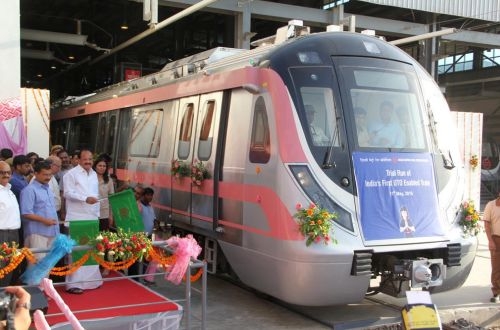The first trial run from the depot to Majlis Park station on the Pink Line (Line 7) took place with a driver, although testing will gradually move towards Grade of Operation (GoA) 4 with full UTO.
The 58.6km Pink Line from Majlis Park to Shiv Vihar is Delhi's first automated metro line and follows the route of Delhi's inner ring road, tracing an almost complete circle around the eastern, southern and western edges of the city on a mostly elevated alignment.
The fleet of 81 standard-gauge trains, which is being supplied by Hyundai-Rotem, differs significantly from previous generations of Delhi metro rolling stock. Each six-car train is formed of four motor cars and two trailers, instead of three powered and three unpowered vehicles, to provide a 10% increase in average speeds and higher regeneration, which will reduce energy consumption by 20% compared with existing lines. Vehicle bodyshells are 3.2m wide, instead of 2.9m and passenger gangways are 1120mm wide, compared with 1030mm on previous trains.
The driver's cab will be removed when the line switches to UTO operation, increasing the passenger area by 5m2.
The trains also feature passenger Wi-Fi, LED dynamic route map screens, programmable LCD passenger information screens, USB charging points, LED saloon lighting with automatic dimming based on ambient light levels, and an inverter-controlled HVAC system.
Noise reduction features include an improved floor design with high-density ceramic wool insulation, and curve-actuated wheel flange lubrication.
CBTC for the Pink Line is being provided by Bombardier under a contract awarded by DMRC in 2013.



